So – the defense is over – Eli did a splendid job presenting and defending her thesis and she can now put a “Dr” in front of her name! Congratulations Dr. Børve!
I’m happy with my contribution – although I keep wondering when I will stop being nervous (Eli on the other hand didn’t seem nervous at all, but “calm as a fridge”, as we would say in Swedish). I do realize that being nervous is such a waste of energy – but how do you stop?
Afterward, I found an e-mail from a colleague who had watched the defense in my inbox, telling me he thought I had done a good job. That one line was very much appreciated – we should write more e-mails like that!
Tides and transport – opponent for the first time!
Tomorrow, Eli Børve (UiO) is defending her PhD-thesis “Tides and Transport: Application to Lofoten and Vesterålen, Northern Norway” and – for the very first time I’ll be standing “on the other side”, as an opponent. Or standing – I guess I’ll be sitting, in front of zoom… without flowers, Champagne, proud parents, and everything else that normally comes with a PhD-defense….
Eli has done an impressive job during the last couple of years, working with high-resolution models to study non-linear effects of tidal flow in the many straits of the Lofoten archipelago. I’ve learned a lot while reading her thesis, and I can assure you that it is much more exciting than it may sound! If the tidal current is strong enough, and if the strait opening is abrupt enough – then two vortices may form, one on each side of the strait, that “auto-propagate” (i.e. they move faster than the background tidal current) far enough from the strait opening that they are not caught by the currents when the tide turn. When this process (“tidal pumping”) is at play the transport through the strait, from e.g. the spawning ground of Cod on one side to the open ocean on the other side, is much greater than if the tides were just moving the same water back and forth… pretty cool!
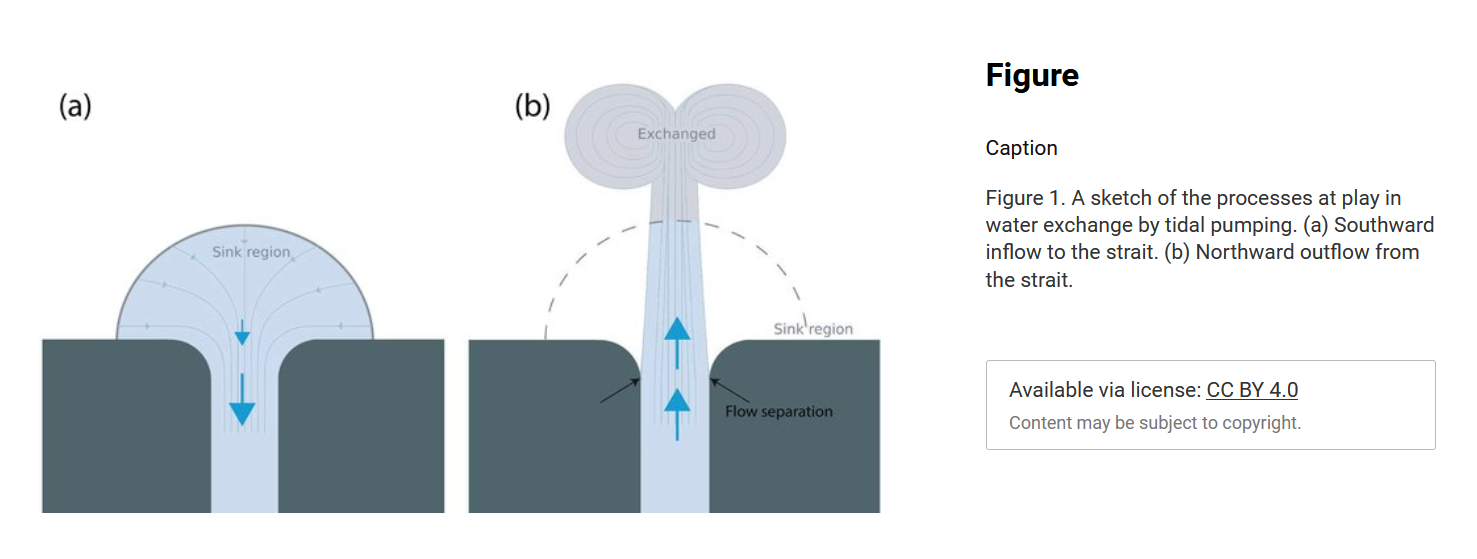
Much of Eli’s work is already published – and I’m sure she will do just fine tomorrow!
Hopefully, I’ll do too… although I’m admittedly a bit nervous!
(and if you want to learn more about tidal effects on ice shelf melt in Antarctica (guess who came up with the topic!) – then have a look at Eli’s trial lecture here! )
New Antarctic Infrastructure project in Dronning Maud Land, Antarctica
Troll is the Norwegian research station in Dronning Maud Land, Antarctica. It was established in 1989 as a summer-only station, and since 2005 it has been manned (and womened) also in winter and, hipp hurray, we just learned that the Norwegian Research Council has decided to support a large upgrade and expansion of the research infrastructure at the station!
I’m involved in the “ocean package” which involves a continuation of the sub-ice shelf moorings at Fimbul, APRES deployment (to measure basal melt rates), and open ocean moorings on the slope. Here you can read about how the ocean influences the Fimbul ice shelf and about ApRES recovery at Fimbul.
Many thanks to Christina and NPI who have put a lot of effort into putting all of this together – I look forward to (continuing) our collaboration!!

Python, cartopy, and quiver
My Python enthusiasm was severly damaged yesterday as I (after a lot of head-scratching) realized that it is not my programming that makes things look strange, but an error in the cartopy* package – when plotting vectors (such as e.g. currents from moorings) in a map using quiver, the vectors are wrongly transformed and end up pointing in the wrong direction… when googling the issue I quickly found solutions and workarounds (thank you StackOverflow!) but still… if I hadn’t tried to plot my scale vector at a 45degree angle I might never have found out…
So, what else can I not trust?
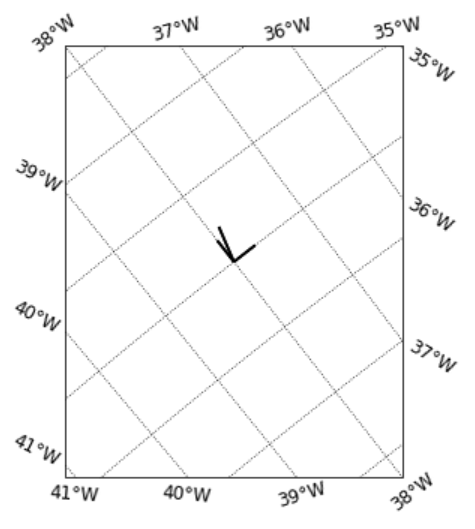
* a Python package to e.g. plot maps
The book is here!
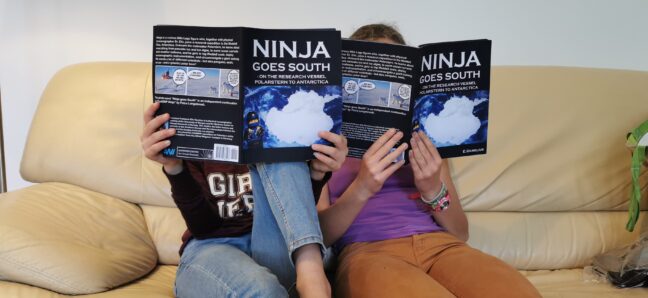
After a bit of struggling in InDesign and with a lot of help from Ellen and google I’ve managed to put the Ninja story together into a book – which is now available online! So if you were wondering what to ask for in your letter to Santa… wonder no more!


Books are sold at “printing price” – no profit to me (but I presume amazon makes a cent or two).
#AntarcticaDay
The first of December is Antarctica Day – and since the day and the world seem a bit gloomy today, I thought I’d share a 100% omicron-free Antarctic penguin-party with you.
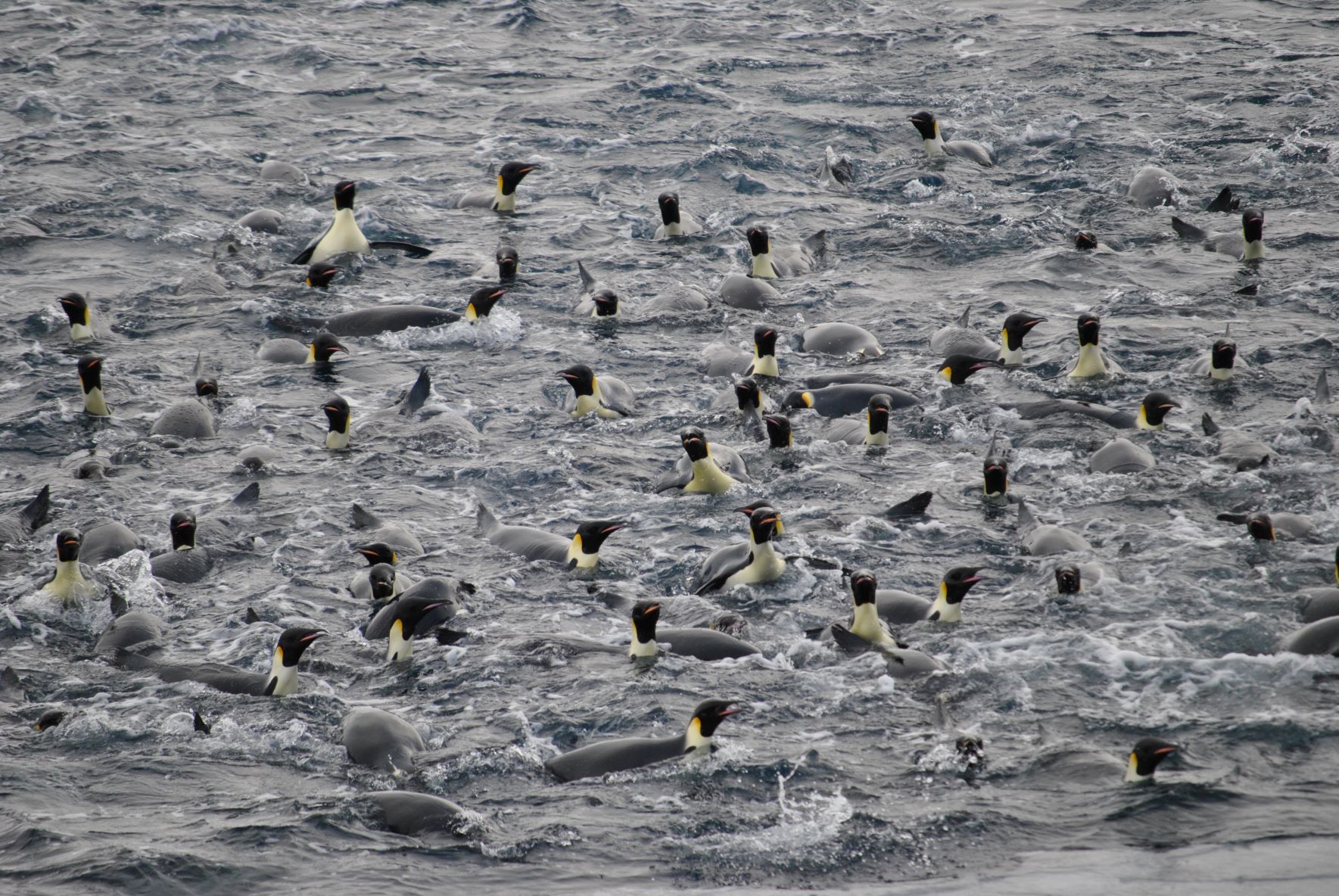
I’m so happy…
… for my colleague, mentor, ex-supervisor, favorite feminist, and friend Prof. Anna Wåhlin who just got selected “rådsprofessor” (~council professor) by the Swedish research council! Along with the honor comes a grant of 50 MSeK (5 Million Euros) to be used in a research project on ocean – ice shelf processes in the Amundsen Sea during the next ten years – I’m sure Ran (the Swedish autonomous (unmanned) research submarine) will get to go on many nerve-wracking excursions under the ice shelves and that she will bring back a lot of exciting data and discoveries! Congratulations Anna – and thank you for involving me in your work – it is so much fun to discuss science with you!
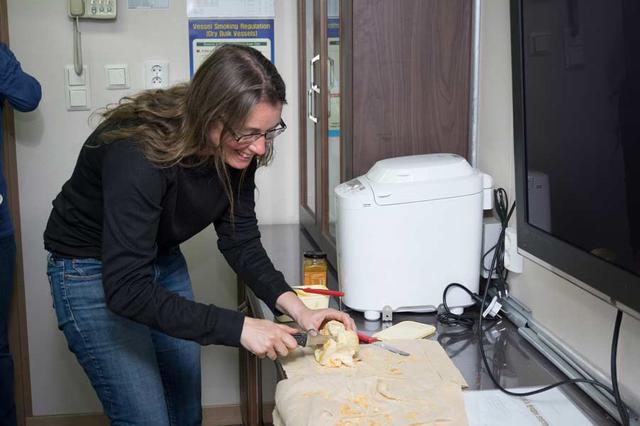
Deep water renewal – finally!
It’s been almost ten years since the water in the deepest basin on Masfjorden was last renewed – but now it has finally happened! My colleague Lars Asplin from the Institute of Marine Research in Bergen do regular hydrographic surveys* of the fjords in western Norway– and the last profiles from Masfjorden show increased levels of temperature and oxygen at depth. Between April and August, the oxygen concentrations in the basin have increased from 2 ml/L to 4 ml/L, making life much, much easier for whoever lives down there!

The oxygen concentrations at depth can only increase if new water enters the basin -i.e during a deepwater renewal. A deepwater renewal can take place if sufficiently dense water is lifted up to sill level outside the sill, for example, when northerly winds move the surface water off-shore** and denser water from below is pumped upward. The coastal records from Sognesjøen, suggest that water dense enough was present at sill level during the last part of April – so the deepwater renewal probably occurred around then.
The news about the renewal was waiting for me in the inbox when returning from holiday – along with an e-mail telling me that the UIB-biologists are heading to Masfjorden this week on a research cruise…. after a bit of frantic e-mail writing back and forth we managed to organize that they take a few extra samples of the new deep water for us!
We’ve got moorings on the Masfjorden sill and in the basin that are to be recovered by fjord oceanography students in February – they will tell us more about when and how the renewal happened!! The students will for sure have a lot of exciting data to write about in their report!
* i.e. they measure profiles of temperature, salinity, and oxygen with a CTD.
** due to the rotation of the Earth, the winds cause a transport of surface water to the right of the wind direction (in the northern hemisphere)
To Python or not to Python…

… is not a question anymore. All our students learn Python, starting the day they enter the university (and even before), and when teaching you are expected to integrate Python and programming whenever possible.
Of course, it makes sense for the university to promote the use of a free, open-source software rather than a commercial product like Matlab, but for all of us old (and not so old) lecturers at the university who – like me – have done your data analysis and plotting since the beginning of time in Matlab, it is not an easy switch.
I took a Python course more than a year ago, and I’ve done a bit of Python here and there, but for a long time now, it has been one of those uncomfortable “have-to-do” but “not-right-now” things that keep accumulating at the horizon. Until a month ago, when a twitter-thread by a colleague (Thanks, Angelica!) who had decided to take the step (and who enjoyed it!) finally got me to dive headfirst into the Python world… so, I read a Python – book (Python for Data analysis by W. McKinney) and set my mental default “program-to- open-when-time-for-science” to Python (or Jupyter, Python is a programming language, not a program). I did not go as far as to uninstall Matlab, but I’m only using it for emergencies…
I quickly realized that I’m Google-dependent – whenever I don’t know how to do something – Google is there to help, directing me to Stackoverflow or one of the thousands of Python tutorials that are available online. It seems like (almost) every question has been asked before – and that there is an army of Python-enthusiasts out there ready to answer and help*!
Now, Matlab and Python have much in common – it is not like I’m starting to learn programming from scratch. Maybe more like learning to speak Norwegian (rather than Chinese) when your mother tongue is Swedish? You understand what the Norwegians are saying (i.e. you can read and – at least roughly – understand code that others have written), but to write your own Norwegian text and to speak… hmmmm, not so easy! You quickly get used to all the small differences – like that you have to start counting on zero and not on one, and that you have to use # and not % to comment out lines – but get accustomed to all the different types of variables in Python, to build up a vocabulary of commands and to “think” in a python way, rather than “translating” your Matlab – way of doing things will take longer time.
I’ve lived more than a decade in Norway – but my children still laugh if I open my mouth and try to speak Norwegian… hopefully, it won’t take that long to be fluent in Python!
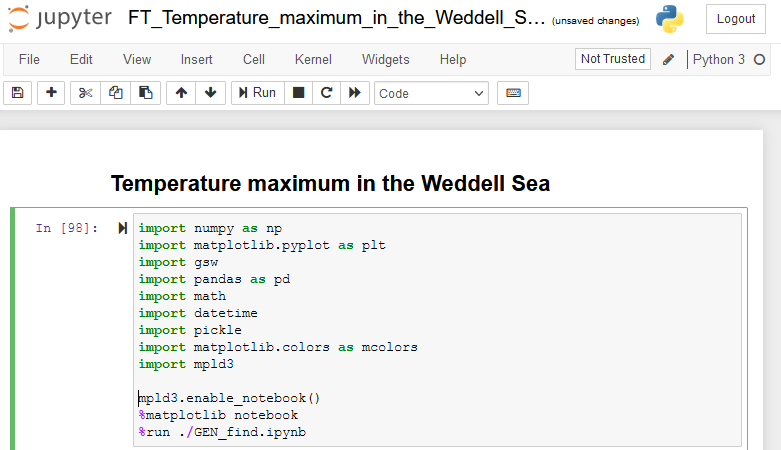
“Hytte” office!
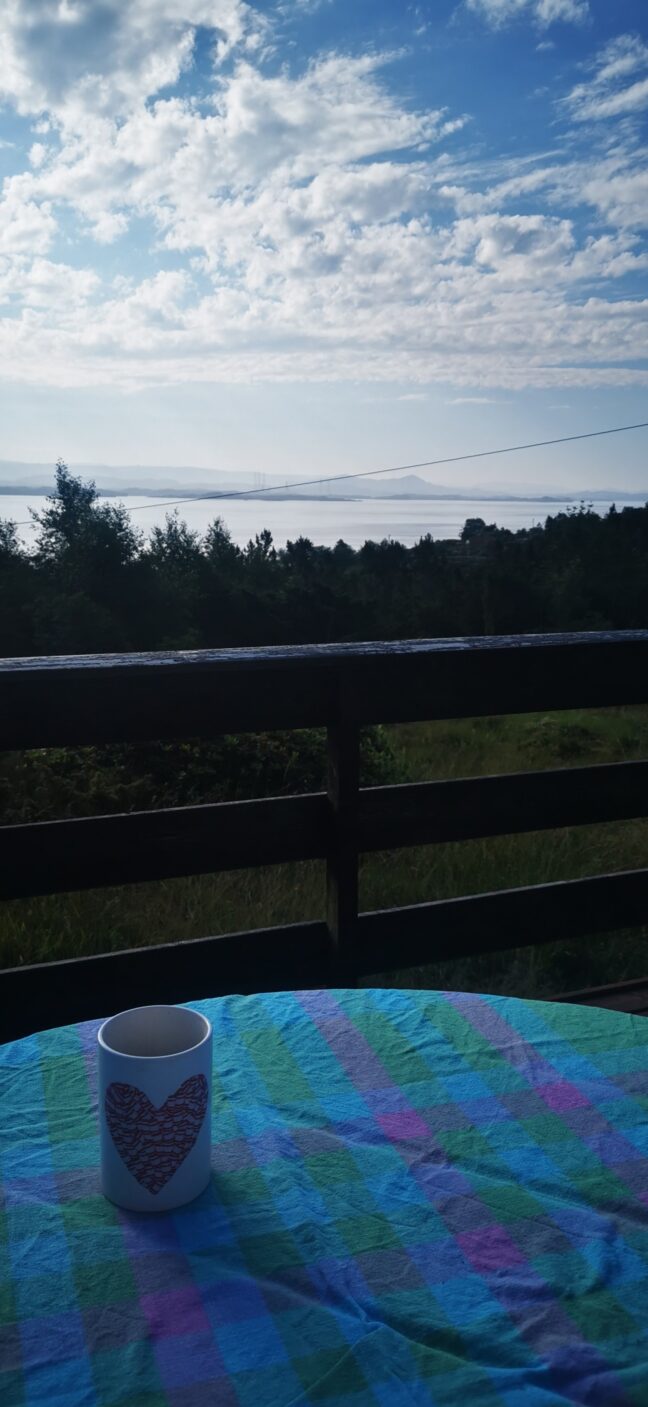
The Norwegian word “hytte” means cabin, and as a foreigner in Norway, you easily get the impression that *everyone* has (or has access to) a “hytte” (if not two or three). That is of course not true, but to “blend” in (end to enjoy lazy weekends away from home) my husband and I bought a “hytte” on an island not far from Bergen a few years ago.
With the kids away on scout camp this week, we took the opportunity to turn the hytte into “Hytte office”. With laptops, food, and an upgraded data deal with our mobile operator in the trunk we headed out to Øygarden earlier this week – and it’s amazing!
I do appreciate the changes in communication that the pandemic has forced upon us – from my “hytte office” I’ve participated in a Ph.D. defense in Paris (Congratulations, Ph.D. Lucie!), discussed figures and results from the Fimbul ice shelf with colleagues in Tromsø and checked in on what our seals in the Weddell Sea are up to… all while enjoying this wonderful view!
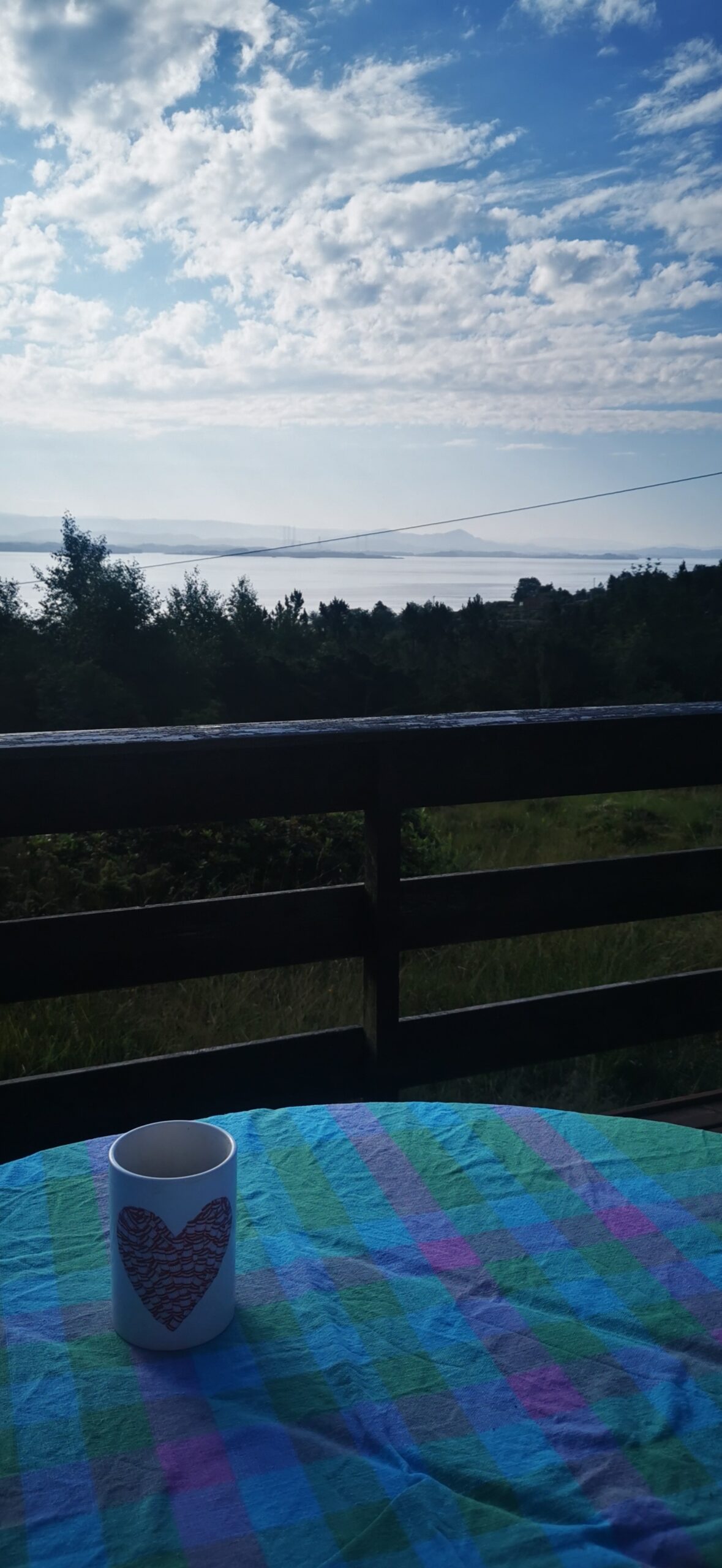
… it’s also a real treat to just step outside and munch a few blueberries (yes they are blue already!) while your Python script is munching away on the commands!
Have a nice summer!
